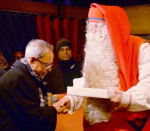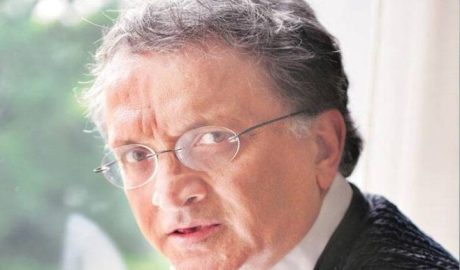 With the rejuvenation of Kashi, Kedarnath and Ayodhya, the party in power shows that the ancient nation and the modern state need not be antagonistic. What’s left for Nehruvians to do but panic and complain. – Aravindan Neelakandan
With the rejuvenation of Kashi, Kedarnath and Ayodhya, the party in power shows that the ancient nation and the modern state need not be antagonistic. What’s left for Nehruvians to do but panic and complain. – Aravindan Neelakandan
The imminent inauguration of the Ayodhya Shri Ram Janmabhoomi Temple seems to have perturbed the usual suspects.
These individuals have for decades arrogated to themselves the right to define Hinduism as they deem fit and only as they deem fit.
One such individual is the noted popular historian Ramachandra Guha.
According to a recent interview of Guha, the Bharatiya Janata Party (BJP) is “reshaping the nature of Hinduism for its political purpose”. He says that Hinduism is not a congregational faith. He says it does not have a holy text like Bible and does not have a holy city like Mecca. That it is a “disaggregated decentralised faith”.
While we will allow the the BJP to defend itself, Guha’s utterances on Hinduism need addressing.
It is true that Hindus are not dogmatic. Hindus indeed are decentralised in the sense that the Hindu Dharma is more a family of spiritual traditions, than a single path.
But this does not mean anything goes! The family of traditions that is today called Hinduism has a certain rootedness. That rootedness is evident outwardly in the Hindu’s sacred geography.
So, effectively, Hindus are not congregational but they are meta-congregational.
They have strong, perhaps the strongest, pilgrim circuits from time immemorial which start or culminate in specific important kshetras. These kshetras, spread throughout India, are held sacred across spiritual traditions of the country.
From Balarama’s tirtha yatra in Mahabharata to Mahatma Gandhi’s Hind Swaraj’s celebration of the Ram Sethu, the Hindu meta-congregation has cut through time, language and other boundaries.
It has created the very nation of India and it is this movement which is still the national life force of India and when that movement ceases, Bharat as a nation will cease to exist.
If Bharat as a nation ceases to exist, then India as a state cannot stand a decade. It will disintegrate faster than the USSR.
That is why every invader who wanted to destroy India zeroed in on the sacred places of worship. In fact, the destruction of the holy shrines in kshetras of tirtha yatra have more devastating impact on Hindus as a nation than for the holy shrines of the so-called dogmatic faiths.
For the dogmatic faiths a holy site is historical. Its recovery or possession is a symbol of victory of the faith. But for the Hindus the loss of a tirtha kshetra is the very loss of a part of national life.
Invaders instinctively understood this. While the Islamist iconoclasts straight away attacked and demolished temples in Kasi, Mathura and Ayodhya, the British approach was far more cunning.
They systematically lowered the values of these holy cities in the state-machinery and in the commercial empire they built in India. The roads and routes, railway connectivity and air connectivity centred around commercial nodes and allied political centres. Delhi, Bombay, Calcutta and Madras emerged at the cost of Kasi, Mathura and Ayodhya.
This policy was followed by Nehruvians as well. Nearly all pilgrimage centres have been allowed to rot for decades without any large, meaningful investment in facilities or urban clean up programmes. The discomfort can always be attributed to Hindu civilisational deficiency.
The Ayodhya movement at its heart challenged all these. It not only challenged the Islamist destruction of the temple, but also the neglect and systematic destruction in slow motion of the holy cities themselves by the Nehruvian state.
With the rejuvenation of Kashi, Kedarnath and other shrines, the political movement currently in power show that the ancient nation and the modern state need not be antagonistic.
What’s left for Nehruvians to do but panic and complain. – Swarajya, 28 December 23023
› Aravindan Neelakandan is an author, historian, and consulting editor at Swarajya magazine. He has degrees in psychology and economics. Most of his work appears in the Tamil language.
Filed under: india | Tagged: hindu pilgrimage sites, ramachandra guha, marxist historians, tirtha yatra, ayodhya kshetra |



























